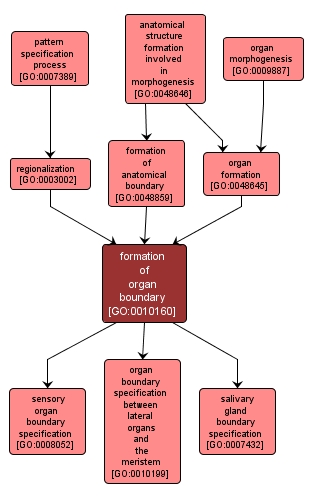GO TERM SUMMARY
|
| Name: |
formation of organ boundary |
| Acc: |
GO:0010160 |
| Aspect: |
Biological Process |
| Desc: |
The regionalization process that specifies organ primordium boundaries resulting in a restriction of organogenesis to a limited spatial domain and keeping the organ separate from surrounding tissues. |
Synonyms:
- organ boundary specification
- GO:0048862
|
|

|
INTERACTIVE GO GRAPH
|














